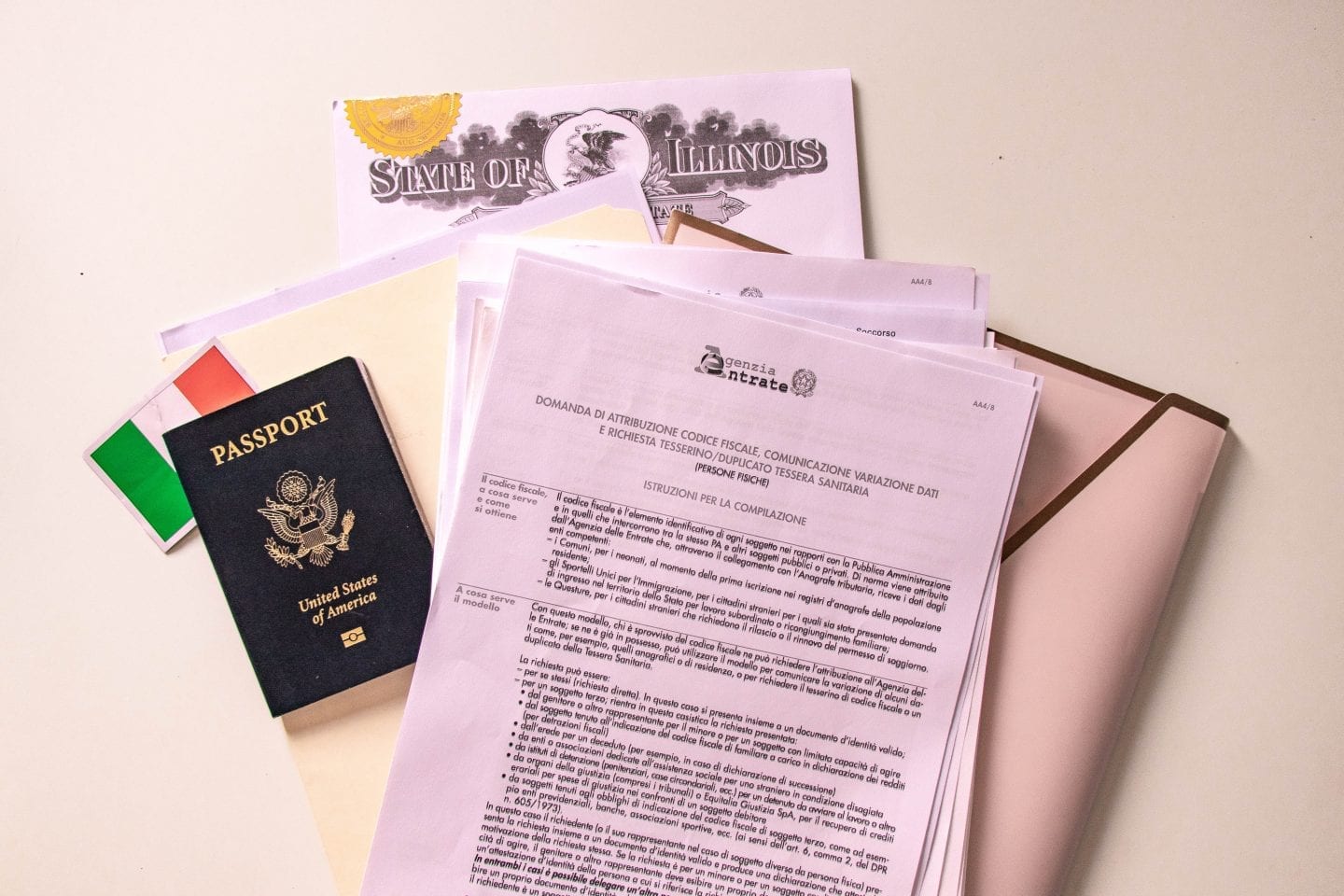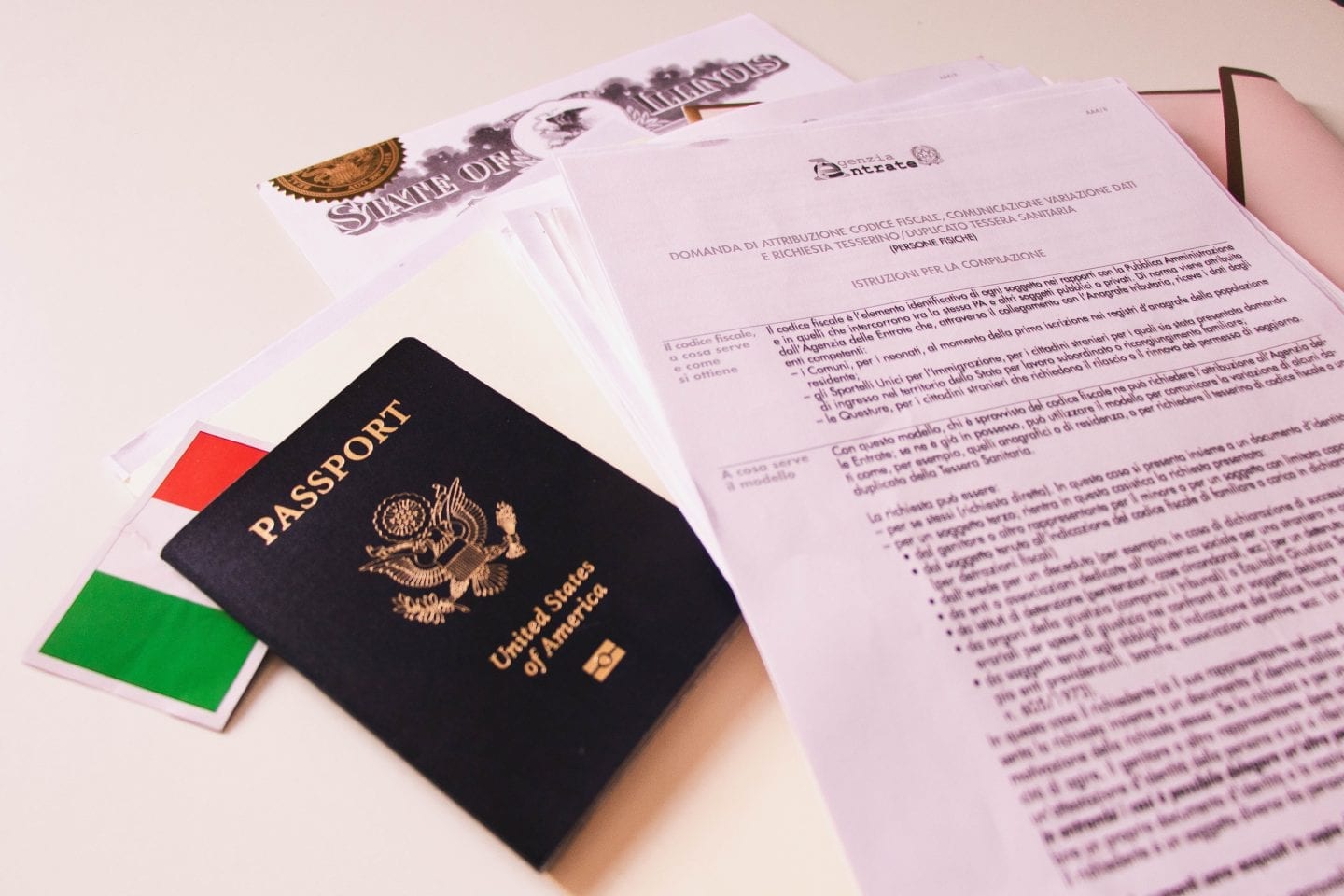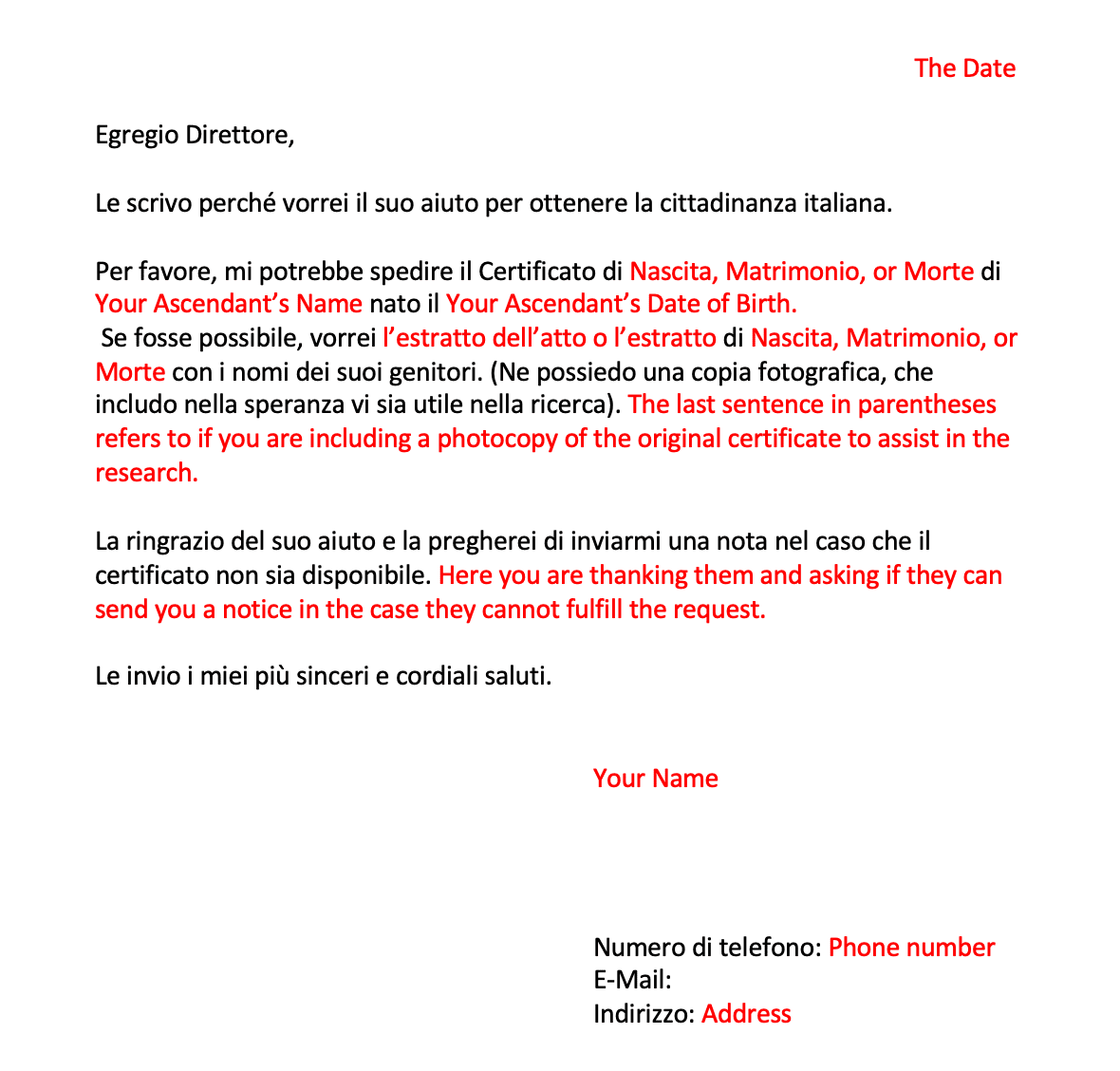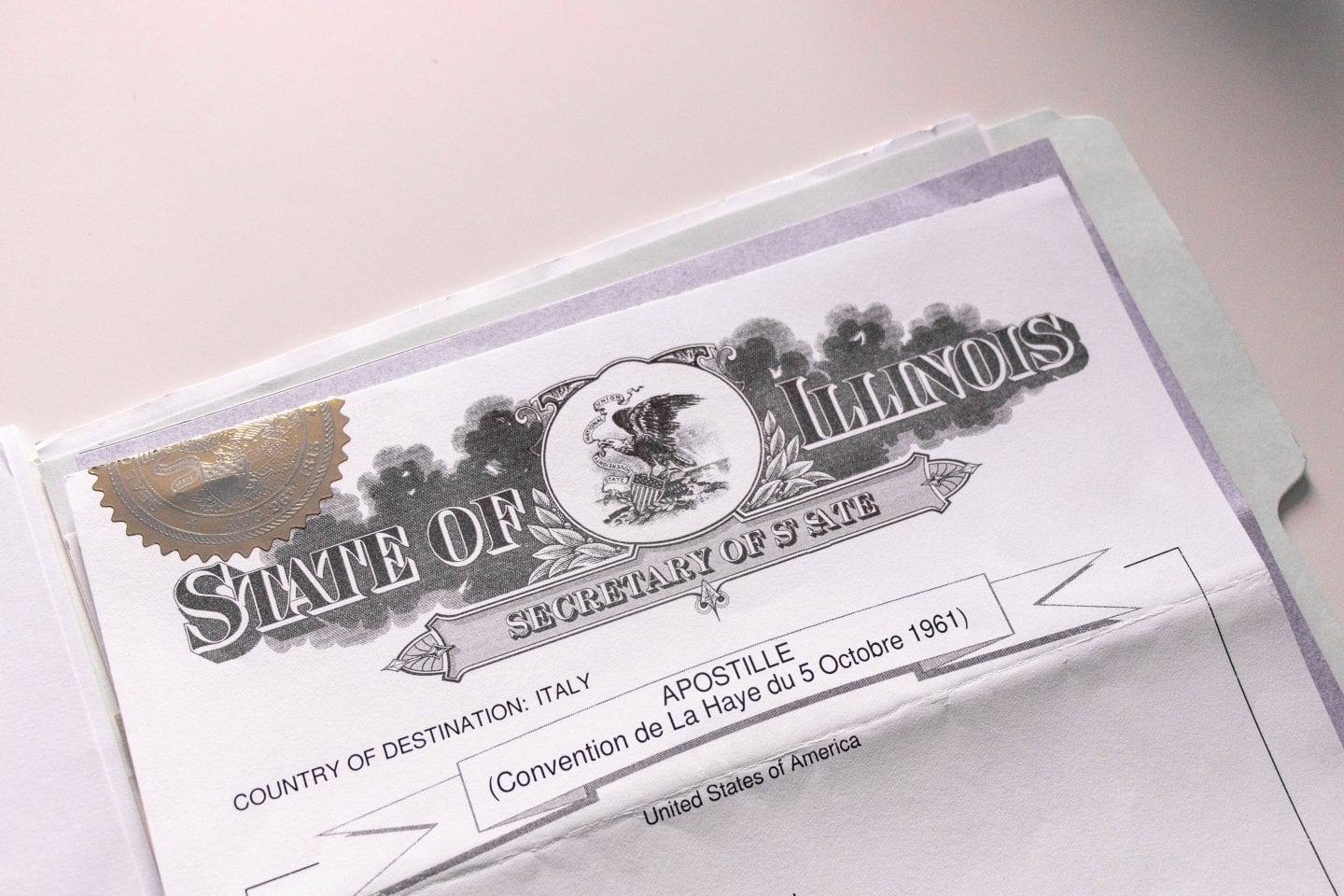
Last updated on January 17th, 2024 at 05:57 am
Gathering documents is the most important part of your dual citizenship application. These documents are what prove you have the right to obtain Italian citizenship. Requesting, certifying, translating, and correcting them can each be lengthy and tedious processes. There are agencies that will do it for you, but they can charge thousands of dollars to do so. It’s completely possible to obtain all the documents yourself and save money, with the right information and tips. This is the complete guide you’ve been looking for all about gathering documents for your dual Italian citizenship application.
The information in this guide refers to documents needed for the Jure Sanguinis or “by descent” way to acquire Italian dual citizenship.
In my other post, you’ll find everything you need to know about pursuing dual citizenship in Italy – eligibility, where to apply, exact steps, and more.
What documents for Italian dual citizenship do you need to obtain?
The documents you need to gather depend on how many generations you have to go back to prove you have the right to Italian citizenship and family circumstances (for example, if there’s a death or divorce in the family you’ll need documents for that.)
The Consulate of Miami thoroughly breaks down each category of applicant and what documents are required.
Personally, I obtained dual citizenship in Italy from my maternal grandfather. I needed to gather:
- Grandfather’s birth certificate
- Grandmother’s birth certificate
- Grandparent’s marriage certificate
- Mother’s birth certificate
- Father’s birth certificate
- Parent’s marriage certificate
- My birth certificate
- Grandfather’s Certificate of Naturalization
For example, if it is your great-grandparent that was Italian, you’ll need an extra three documents for that generation.
The purpose of obtaining all of these documents is to prove you have the right to Italian citizenship. The right to Italian citizenship passes on through your bloodline, as long as the Italian ancestor:
- was an Italian citizen at the time of their child’s birth.
- was living after March 17, 1861 (when Italy unified as a country.)
- never renounced their Italian citizenship before an Italian authority.
- was Italian after 1912, which is when the dual citizenship Law no. 555 was passed.
Gather Documents from the US

Once you’ve determined your eligibility, you can begin to collect the documents that prove you have the right to obtain Italian citizenship based on your family lineage.
Required documents that you’ll have to collect from the United States include the birth certificates, marriage certificates, and death certificates of yourself, parents, grandparents and whatever other ancestors were born in the US that follow your personal lineage.
For these documents, you will have to contact the Vital Records office of the state where the birth, marriage, or death takes place.
Often, it is easy to request documents, either by printing and mailing a form to the office or through VitalChek online records ordering (which is provided through some offices.)
Special note: At times, I made the request in my name for my parents’ documents, but it would be denied saying that my parent themselves would have to make the request if they are still living. If your ascendant can request the documents themselves (i.e. with a picture of their ID and their signature) then that will help to avoid any setbacks.
All documents must be certified, long form copies.
You’ll also have to collect the most important document of them all – your Italian ascendant’s Certificate of Naturalization.
Certificate of Naturalization
The Certificate of Naturalization is the most important document because it is the solid proof that confirms your Italian ascendant was still an Italian citizen at the time of their child’s birth, therefore giving them the right to Italian citizenship.
It’s also the most difficult document to acquire in most cases.
Through the USCIS
If the Italian ascendant through whom you are applying for your dual Italian citizenship is still alive, the only way you can acquire the Certificate of Naturalization is to call the toll-free number and make an appointment with the USCIS (US Citizenship and Immigration Services) to get a certified copy.
You can no longer schedule an appointment online and they do not have updated information on this post about obtaining a certified copy of the Certificate of Naturalization from them.
This took the most time by far in my citizenship process – literally years! Here’s my personal experience:
I called for months over and over again to try and make an appointment. They would always put me down for a request and tell me I’d get a call back. Often, the call back never happened, so then I’d call again until one time the call back actually came and I was able to make an appointment for only a few weeks later.
Keep in mind, your Italian ascendant is the person that needs to go to this appointment. I had to give the USCIS confirmation over the phone from my grandfather (who was on another phone, states away) that I could make this appointment for him.
Through Other Agencies
There is also the potential for obtaining the Certificate of Naturalization through the USCIS Genealogy program. The Genealogy program does not provide certified copies, however, they have noted in their FAQ section that those applying for Italian dual citizenship do not need a certified copy.
I would call and double-check this with the USCIS and the consulate or comune that you are applying to.
If you can’t obtain a certified copy of the Certificate of Naturalization, you have another option through the National Archives to obtain documents that act as the same proof.
You can open up a request to research the Declaration of Intention, Petition for Naturalization and the Oath of Allegiance your ancestor completed.
What do you provide if they never naturalized?
If your ancestor never naturalized, then your application is actually more straightforward.
You have to obtain a Letter of No Record of Naturalization from both the USCIS and NARA (National Archives) and one of the following:
- Census dated after your birth
- Documentation from USCIS/NARA showing alien status after the birth of the next ancestor
- Father’s Italian passport and/or US Green Card dated after the birth of the next ancestor
Information from the Italian Consulate of Miami.
Gather Documents from Italy

To start, you’ll have to know which comune your Italian ascendant was born in. Once you have that information, it’s time to locate the comune’s address.
This index will first ask you what Provincia or “province” you are looking for. If your Italian ascendant was born in Cefalù, for example, you would select the province of Palermo. Then, scroll down and select Cefalù from the list of the comune on the next page.
On the page of the comune, you’ll find the “Sito Ufficiale,” or the official website, linked on the righthand side. Use this to locate the address of the comune to which you’ll send your document request.
Are you planning to apply for dual citizenship in Italy? If so, you can also check out the “Contatti,” or Contacts page on any comune’s website and see if they list an email for their Anagrafe office. If you know what comune you want to apply through (it doesn’t have to be where your ancestors are from,) you can try getting in touch with the office ahead of time to make sure they are familiar with the Jure Sanguinis process.
How to Order Italian Documents
In your actual request for your ancestor’s document, here’s what you’ll need to include:
- Request Form – This is in Italian. Be sure to check Estratto dell’atto or Estratto, which is the long-form version of the document. I suggest requesting an extra copy as a backup!
- Copy of Photo ID – This can be a driver’s license or a passport.
- Photo/Copy of the Original Document – If you have access to the original Italian birth certificate, marriage certificate, etc., include a photo/photocopy of it in your request envelope.
- Self-addressed return envelope with postage – It can be difficult determining what the postage will be, so you can try to figure it out at the post office with the help of the clerk or add some euros to your envelope to cover what postage costs may be.
- A few extra euros – This is optional as a sort of payment to the comune, but I didn’t do this and still received my documents. Comune are not obligated to fulfill records requests, so it may help your case to include 5 euros cash if you have it. Some comune may charge a fee, so if you can get in contact with them beforehand, you could avoid setbacks.
- A thank you letter – With each request I made, I included a letter stating what the document was, why I needed the document, and thanking the comune for helping me find the document. Below you can copy or download a template of what the thank you letter should look like!
The US embassy has more information you can indulge in regarding obtaining vital records from Italy.
Free Template Letter Asking for Documents from a Comune

Above is the exact template I created with one of my Italian professors when I requested my documents!
The red areas of text are where you’ll fill in the information relevant to your case, as well as some mini explanations as to what some of the text is saying, in case you don’t speak Italian.
Remember to write your dates DD/MM/YYYY, which is how they do it in Europe.
I hope that is clear for you to copy! If you’d prefer to download the document directly (in Microsoft Word format), it’s available in The Travel Library where I put all my free resources related to living in Italy and travel. The Travel Library access will be emailed to you so you can download the document when you sign up below for my newsletter.
Discrepancies, Apostilles, and Translations of Documents
The final category related to obtaining documents for Italian dual citizenship is the extra things you need to do to get them ready for use in the application.
All of these things need to be done or addressed no matter which route you choose to apply through – either in Italy or at your local consulate.
Discrepancies
Double check your documents a million times over to make sure there are absolutely no discrepancies in spelling and dates.
They will scrutinize every document to make sure all the information lines up. If one document says Marie and the other says Maria, your application could be rejected.
Most of the Vital Records offices will have a section on their website stating how to go about correcting a mistake on a document.
Apostilles

Every document that comes from the US will need to have an apostille. This certification is a paper attached to the document that basically says this document is allowed to be used internationally in the specified country (Italy.)
The only document that does not need an apostille is the Certificate of Naturalization.
The Secretary of State (the same state where the document comes from) issues apostilles, not the Vital Records office.
Some Vital Records offices will provide the option to immediately forward your document request to the Secretary of State who issues the apostille. In other cases, you’ll have to wait for the certified copy of the document requested to be mailed back to you and then mail it off to the Secretary of State.
Translating Your Documents
All documents not in Italian will need to be translated into Italian.
If you are applying at the consulate in the US, I would recommend looking. atyour consulate’s website. For example, at the Consualte of Miami, they have. alsit fo recommended translators.
Technically, your documents can be translated by anyone. However, I wouldn’t risk having a setback, or worse – get your application completely rejected – to try and save money.
If you are applying for dual citizenship in Italy, you’ll need to have your documents translated by a court-sworn translator. This means the translations are certified in court. Not every translator has this certification, so be aware of that when searching for translators.
I used Natalia Bertelli. Not only was the turnaround time incredibly fast (only a few days) but the rates she charged were much more inexpensive than what she could have charged. (Some translations cost 50 euros per page – so when you have ten pages to translate, that can add up very quickly.)
The consulate does not require that apostilles and the Certificate of Naturalization are translated, however in Italy, the comune may have different requirements. I had every single document that wasn’t in Italian translated, including the apostilles and Certificate of Naturalization. Follow the advice of your translator and inquire at the comune what their requirements are.
Mistakes I Made You Can Learn From
I pretty much encountered every mistake in the book you could make when gathering documents for dual Italian citizenship.
Firstly, I overlooked discrepancies. I started collecting documents in 2018 but I wasn’t near ready to apply until 2020. Since the process hadn’t been at the top of my mind for so long, I had missed two spelling discrepancies in two different documents.
I then had to pay to correct both (about $200 in total.) Plus, I was leaving for Italy in just a few weeks, so I was really in a rush to get the corrected ones back. Lesson learned: double-check every single letter and date on your documents. Have someone else look to as a fresh pair of eyes.
Secondly, I scrambled for so long trying to figure out how to get a certified copy of the Certificate of Naturalization. This document took the longest to get, mainly because I gave up for a good year, but also because the USCIS offices don’t operate like they used to. Lesson learned: Make the Certificate of Naturalization a priority. The longer you wait to acquire it, the further off your dual Italian citizenship application will be.
Lastly (that I can think of,) I once sent important documents through regular mail AND I forgot to include my contact information in the packet. This resulted in me crying and running around from the UPS store to the post office worried I’d never see them again. They went off to be corrected and apostilled and luckily showed up a few days later. Phew! However, a lesson learned: Always include your contact information when sending or requesting documents. Pay extra for shipping with tracking so you don’t have to worry if your request/documents arrived.
Final Thoughts & Tips
This post was long but hopefully informative. I hope I’ve answered all of those looming questions you have (and if not you can contact me through my email!) Or, start a discussion in the comments for others to learn from.
Here are some extra resources for information & support during the process:
- Italian Citizenship Assistance Podcast
- Italian Dual Citizenship Facebook Group
My final tip would be to take pictures of every single document and their attached apostilles and translations. Once you hand them in, you won’t get them back. So, having a photo on hand can save you if there are discrepancies or something else that needs to be addressed during your application.
Have any more questions about Italian dual citizenship documents? Let me know in the comments!


I hope to cover some other topics related to dual Italian citizenship and living in Italy, so if you have something you’d like to know (the cost of Italian dual citizenship, what to do after you’ve received Italian citizenship, etc.,) please let me know in a comment!
The process is a long and hard one but it’s so worth it in the end. Stick with it and you won’t regret your perserverance!
XOXO
Michela



Just beginning my journey to dual citizenship, my first thought was that i need a lawyer and upwards of $10k to make it happen. the more i researched though, mostly from the tips you’ve provided here, the more i realized it is quite possible to achieve without that support. I will be digging back to my maternal great-grandfather through her dad. Thank you so much for this information. Not only does it appear thorough and pertinent it also include the tips necessary for success! I will definitely be a follower!
Grazie mille!
Author
Hi Joe,
That is so great to hear! Good luck on your citizenship journey and feel free to reach out and ask me any questions if you’d like 🙂